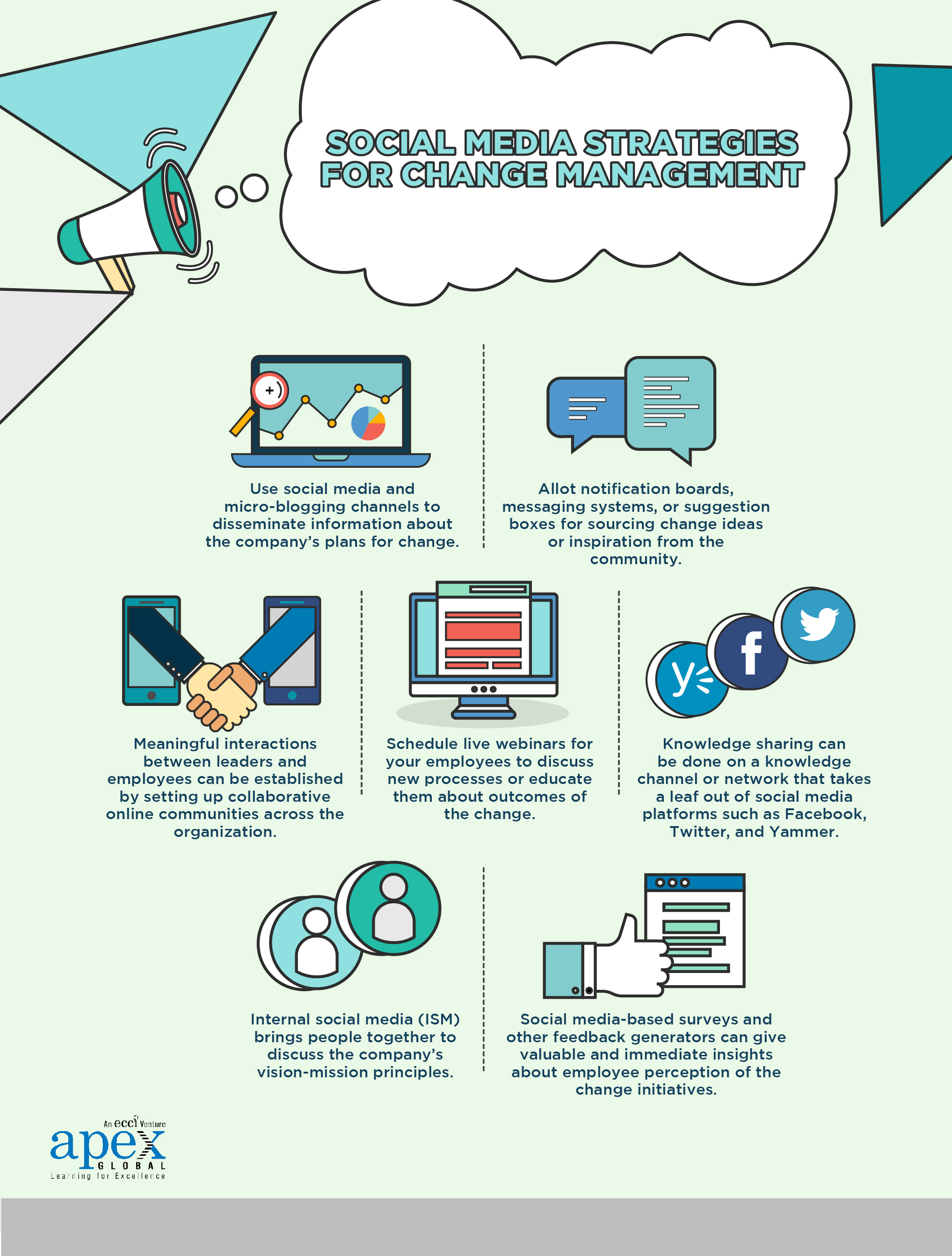Everyone’s talking about change these days, especially with how social media has improved the way communities connect with one another. Business leaders are also recognizing the value of social media as a powerful catalyst for change management within their organization.
What Roles Do Social Media Play in Change Management?
Because of the dynamics of social media, business organizations are now tapping these platforms to help them in their company’s change management initiatives. Social media can do the following:
- Provide an avenue for transparent dialogue among your employees and customers.
- Encourage collaboration in generating ideas related to the transformation.
- Become a support system as company leaders and employees move through the transition.
- Deliver new employee learning experiences that are compatible with the change.
- Promote sharing of current best practices, processes, or technologies.
- Enhance internal branding of the company.
- Assess progress and feedback about the change management program.
- Promote cultural shifts and readiness for relative challenges.
Social Media Strategies for Change Management
Relative to the role of social media in change programs, here are recommended strategies for launching organizational change programs:

Use social media and micro-blogging channels to disseminate information about the company’s plans for change.
Customers and employees can reach out to the organization to ask questions, raise concerns, and share ideas about the upcoming transformation. Be sure to monitor online forums to get a feel of the community’s sentiments, clear misinformation, and address uncertainties in the open.
Allot notification boards, messaging systems, or suggestion boxes.
This is for sourcing change ideas or inspiration from the community.
Set up collaborative online communities across the organization.
Leaders and employees need an avenue to have meaningful interactions. You can even designate a dedicated facilitator for live conversations on these platforms.
Schedule live webinars offered by training providers in the Philippines for your employees.
To discuss new processes or educate them about outcomes of the change. If you have a YouTube channel, use it to share audio-video content to the team.
Knowledge sharing can be done on a knowledge channel or network that takes a leaf out of social media platforms such as Facebook, Twitter, and Yammer.
They have tools and features that let you share documents, files, polls, RSS feeds, and similar content.
Internal social media (ISM) brings people together to discuss the company’s vision-mission principles.
In turn, being on the same page as everybody else reflects good branding for the company.
Social media-based surveys and other feedback generators can give valuable and immediate insights about employee perception of the change initiatives.
Tips on Using Social Media for Change Management
Transparency is key. Since change is inevitable, organizations should take it upon themselves to provide the means for constant communication within employees and other affected community members. Regular updates and informative sessions should be available from top executives all the way to the bottom ranks of the organization.
Be inclusive. Think of all areas that require change planning and implementation, and then mobilize people to get involved in the process using social media technologies.
Listen and educate well. Change management needs to be a two-way communication type of undertaking, much like how social media promotes the exchange of ideas. Listen to everyone who wants to be an agent of change as they propose ideas, ask questions, or even raise objections, and then make them understand all there is to know.
Be understanding. At the end of the day, people may either fear change or embrace change. Make sure that employees feel motivated to face challenges through dialogues, coaching, and collaboration via social media.


